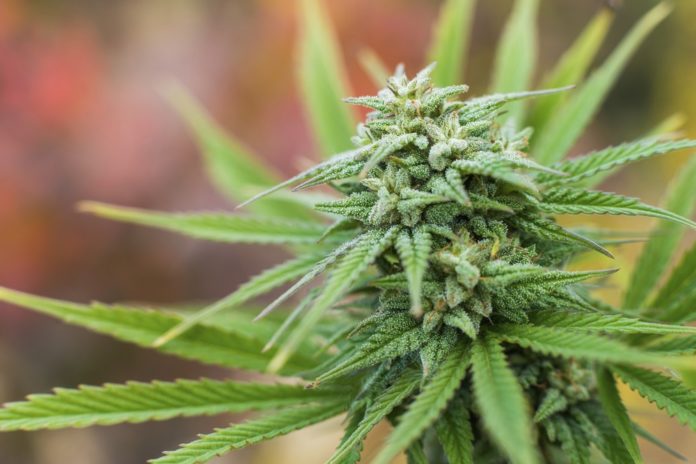To stave off prison time, Mark Shanklin of St. Louis must convince the Missouri Supreme Court that in 2014, Missouri voters approved a pro-farming constitutional amendment with the intent to legalize growing marijuana.
Putting aside the question of whether Shanklin succeeds — the court is scheduled to take up his case Nov. 7 — his argument raises an interesting hypothetical: What would happen if Missouri somehow legalized marijuana?
In this hypothetical “Stone-Me State,” people like Shanklin wouldn’t go to prison for pot plants, and Missouri’s fields of soybean and corn could be neighbored or replaced by the distinctive leaves of marijuana and hemp stalks.
Legalization would free up law enforcement resources, as police and prosecutors would no longer work to lock up marijuana growers and smokers. About 9 percent of arrests in Missouri in 2016 were related to the state’s marijuana prohibition.
There were about 1,200 arrests for selling or growing marijuana in Missouri in 2016, according to data maintained by the Missouri State Highway Patrol, including 25 in Greene County. The highway patrol counted more than 21,000 pot possession arrests statewide in 2016, including more than 700 busts in Greene County.
“We can’t say for sure how many people are in the DOC system specifically for growing marijuana,” a spokesman said, noting that Missouri sentencing records for people convicted of manufacturing controlled substances do not specify drug types.
Data provided by the corrections department says 183 of 6,796 prisoners incarcerated for a drug offense committed marijuana-related offenses, though the vast majority of these offenses (5,564) do not have a drug-type modifier.
This “makes it difficult to paint a clear picture,” the department spokesman said. “… Oftentimes, the sentence and judgement reports received from the court do not discuss the specific details of the crime, therefore we don’t have the data we can aggregate.”
According to the Missouri Department of Agriculture, agriculture and forestry generated $6.2 billion in government revenue and were responsible for about 380,000 jobs in 2016. Last year in Greene County, there were about $3.4 billion in sales and 12,600 jobs derived from agriculture-related activity.
Impacts to the California and Colorado economies have been in the billions since the states legalized pot. And marijuana users in Springfield, where pot is prohibited, have seen the local market inundated with higher-quality herb from the west.
Another aspect is the impact of marijuana farming on the environment.
A 2016 study examining pot-production sites in northern California noted “the amount of land and water used for growing cannabis has not traditionally been a concern” compared to other agricultural activity.
“But where the cannabis is grown has potential ecological consequences,” researchers at Ithaca College said, noting that growing marijuana can increase the potential for soil erosion and chemical run-off, harming fish in the process.
Water systems could be spared if pot production moves indoors, though that brings its own host of problems, according to a February article in the Scientific American. But as the International Business Times noted, indoor growing operations can result in higher energy consumption.
Researchers in Colorado — which is attracting numerous young people due in part to its legal marijuana and craft-beer industry — indicated the burgeoning cannabis culture could affect local brewing there.
As the only other species related to pot in Colorado, “hops is the plant species that faces the greatest potential crossover threat from any of the cannabis specialist insects,” and vice versa, according to researchers at Colorado State University. Even so, marijuana “poses no unique threat” to other agricultural sectors, they added.
The closest analogue to hypothetical Missouri cannabis farming — big-time farming, not Shanklin’s houseplants — could be future growing operations in northern Arkansas, where voters approved medical marijuana in November.
It’s unclear how much research, if any, state agencies have conducted into what legal marijuana would mean for Missouri.
Spokespeople for the Agriculture, Conservation and Natural Resources departments and the Office of Administration said they were not aware of any research related to the potential impact on Missouri of legalizing marijuana production. Spokespeople for the departments of Economic Development, Health and Senior Services, Public Safety did not respond to requests for comment.
The Ithaca College study offers both an explanation and a warning regarding the lack of available reading material:
“Land-use science on cannabis agriculture lags behind research on other crops, but advances in the field will be crucial for predicting future cannabis expansion and moderating its impacts.”
In addition to Shanklin’s court challenge, there are at least three separate efforts seeking some form of medical marijuana legalization in Missouri in 2018.
Better Way Missouri is seeking reforms through the Missouri General Assembly. In particular, this group wants to legalize cannabis for medical purposes and legalize the growing of industrial hemp.
New Approach Missouri says it’s gaining steam and has collected about a quarter of the signatures it needs to get its initiative on the November 2018 ballot. This initiative proposes regulating medical marijuana with a 4 percent tax to aid Missouri veterans and includes a provision allowing qualified patients to grow up to six cannabis plants for personal use.
Also, Springfield attorney-physician Brad Bradshaw is funding his own amendment, which he says has collected more than 100,000 signatures and has passed the halfway point to get on the ballot. The Bradshaw amendment also permits medical marijuana use, creates a “Biomedical Research and Drug Development Institute” in Missouri and gives Bradshaw an immediate but temporary leadership position.
credit:news-leader.com

